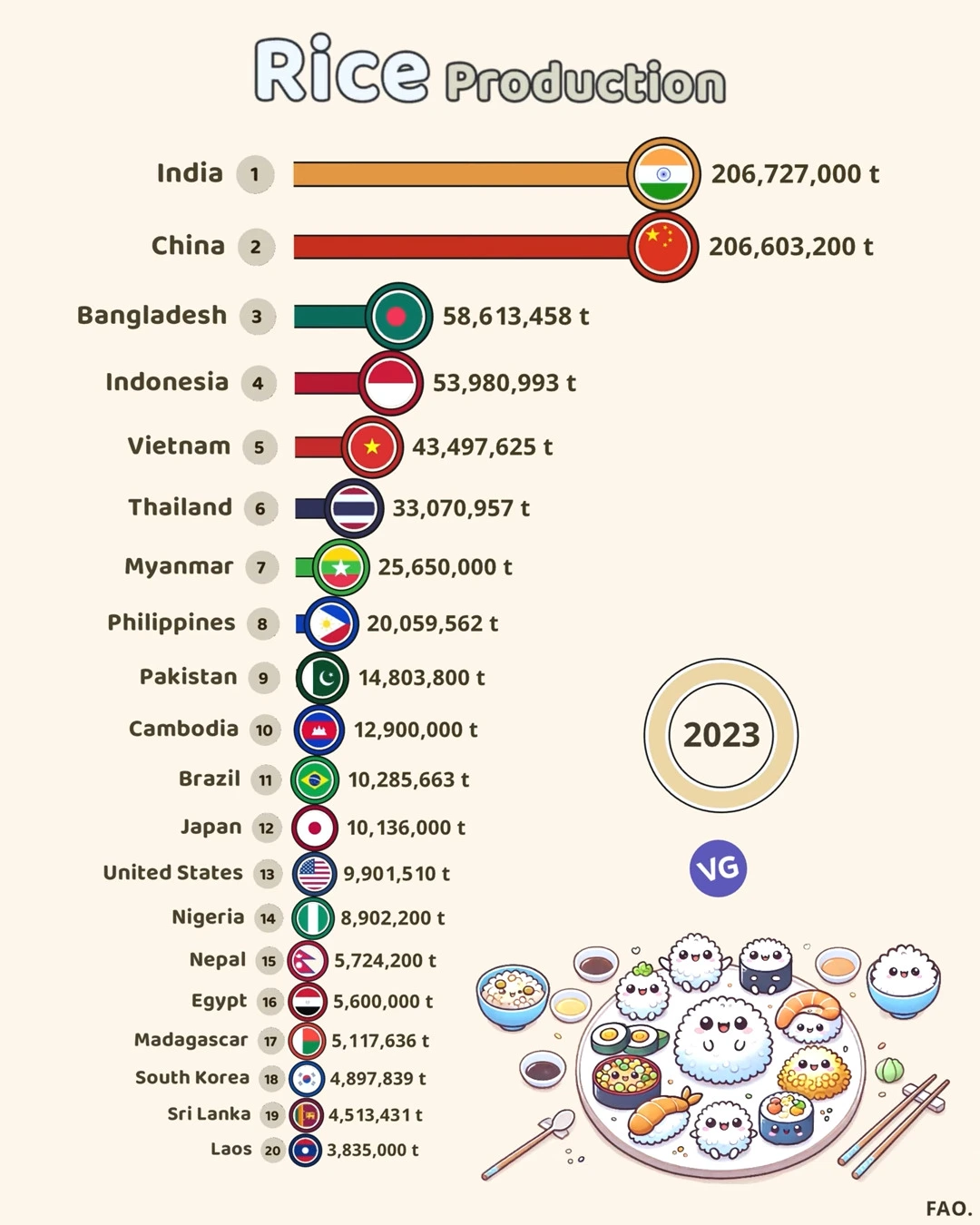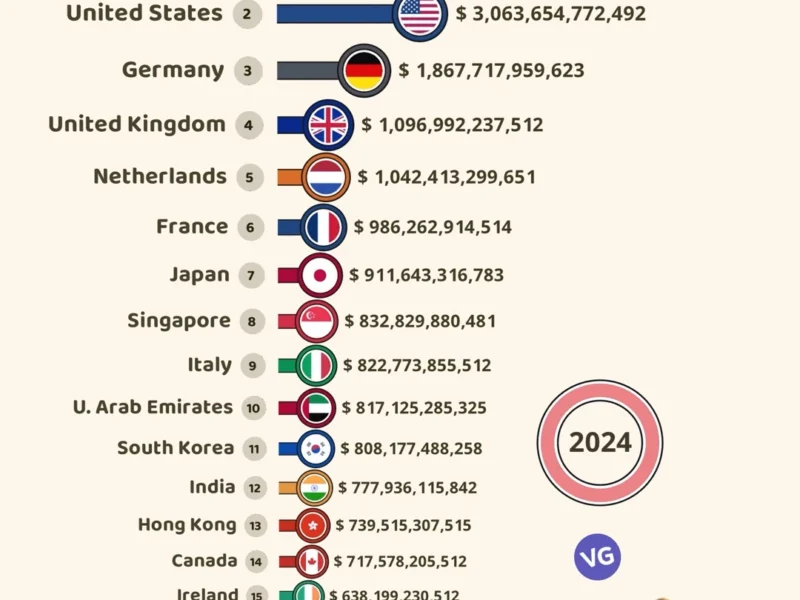Rice is a key food for over half of the world’s people. Most rice is grown in Asia, where the climate and soil are perfect for it. The FAO says Asia leads in rice production, but America and Africa also play a role.
Global Leaders in Rice Production
| Rank | Country | Production (tons) |
|---|---|---|
| 1 | 🇮🇳 India | 206,727,000 |
| 2 | 🇨🇳 China | 206,603,200 |
| 3 | 🇧🇩 Bangladesh | 58,613,458 |
| 4 | 🇮🇩 Indonesia | 53,980,993 |
| 5 | 🇻🇳 Vietnam | 43,497,625 |
| 6 | 🇹🇭 Thailand | 33,070,957 |
| 7 | 🇲🇲 Myanmar | 25,650,000 |
| 8 | 🇵🇭 Philippines | 20,059,562 |
| 9 | 🇵🇰 Pakistan | 14,803,800 |
| 10 | 🇰🇭 Cambodia | 12,900,000 |
| 11 | 🇧🇷 Brazil | 10,285,663 |
| 12 | 🇯🇵 Japan | 10,136,000 |
| 13 | 🇺🇸 United States | 9,901,510 |
| 14 | 🇳🇬 Nigeria | 8,902,200 |
| 15 | 🇳🇵 Nepal | 5,724,200 |
| 16 | 🇪🇬 Egypt | 5,600,000 |
| 17 | 🇲🇬 Madagascar | 5,117,636 |
| 18 | 🇰🇷 South Korea | 4,897,839 |
| 19 | 🇱🇰 Sri Lanka | 4,513,431 |
| 20 | 🇱🇦 Laos | 3,835,000 |
India leads with 206,727,000 tonnes of rice in 2023, just ahead of China. These two countries are the backbone of rice production worldwide. They meet their own needs and also export rice to other places.
Bangladesh, Indonesia, and Vietnam are also major players. They have modern farms and terraced fields that help them grow a lot of rice.
Thailand, Myanmar, and the Philippines round out the list. They are known for their aromatic rice, like Thai rice.
America and Africa’s Involvement
While most rice comes from Asia, some countries outside the continent are notable. Brazil is South America’s top rice producer, with 10,285,663 tonnes in 2023. The U.S. also produces a lot, thanks to new farming technologies.
In Africa, Nigeria is a standout with 8,902,200 tonnes. Egypt and Madagascar also have fertile land that helps them grow a lot of rice.
Economic and Environmental Impact
Rice production is a big deal for many countries’ economies. In India, China, and Vietnam, it supports millions of farmers. Countries like Thailand and Pakistan also make a lot of money from rice exports.
But growing rice has big environmental costs. It leads to methane emissions and uses a lot of water. This is a problem in areas where water is scarce.
Future Perspectives
As the world’s population grows, so will the demand for rice. New technologies aim to make rice farming more efficient and less harmful to the environment.
Groups like the FAO and World Bank promote sustainable farming. They want to ensure rice can be grown safely for the future.
📌 Sources:
World Bank – Agricultural Economic Data
FAO – Food and Agriculture Organization of the United Nations
USDA – United States Department of Agriculture



